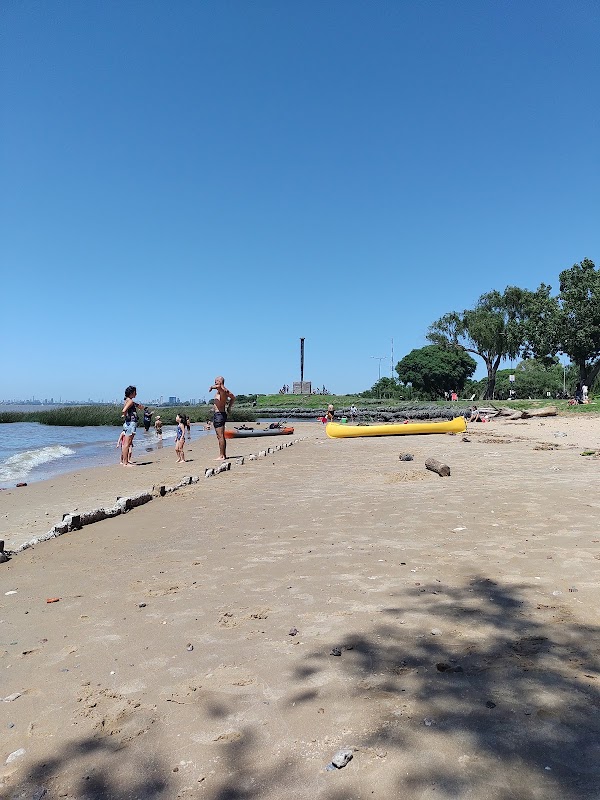Ascending Pico Basilé: A Practical Guide to Malabo’s Summit Adventure
Climb Pico Basilé for an unfiltered encounter with Equatorial Guinea’s tallest peak. This guide equips you with essential insights, blending immersive trail descriptions with practical gear and timing tips to help you conquer the mountain’s lush slopes and breathtaking summit views.
Start Early to Beat the Rain
Tropical afternoon showers are common; beginning your hike at dawn helps avoid slippery trails and offers clearer summit views.
Wear Waterproof Hiking Shoes
Trails are often wet and muddy; sturdy footwear with good grip prevents slips and keeps you comfortable throughout the climb.
Bring Extra Water and Hydration Supplies
The climb is physically demanding with limited water sources; carry sufficient fluids to stay hydrated from start to finish.
Consider Hiring a Local Guide
Guides enhance safety, point out hidden wildlife, and provide cultural insights that deepen your connection to the mountain.
Ascending Pico Basilé: A Practical Guide to Malabo’s Summit Adventure
Pico Basilé stands as the highest peak on Bioko Island, challenging adventurers with its lush, rainforest-clad slopes and rewarding them with sweeping panoramic views from its 3,012-meter summit. Starting near Malabo, this hike delivers a raw connection to nature—dense forest trails where the canopy filters sunlight and the wind carries the whispers of the mountain’s ancient presence. The trail stretches roughly 12 kilometers round-trip with an elevation gain of about 1,200 meters, demanding steady effort but offering constantly shifting scenery to keep the pace engaging.
The journey begins on trails carpeted with damp leaves and vibrant mosses, where streams occasionally dare you to step across with nimble balance. As you climb, the forest’s voice shifts—bird calls sharpen, leaves rustle differently—and the terrain tightens to rocky outcrops and narrow ridges where footing must be deliberate. Watch for sudden bursts of light breaking through the canopy; these are previews of the summit’s promise.
Reaching the summit is meeting the mountain on its own terms: the wind there insists you respect its pace, sweeping away fatigue with cool drafts as the horizon unfolds. From this vantage point, you see Malabo’s coastal outline fade beneath a quilt of clouds, the Atlantic’s expanse pushing limits beyond the island’s border. This moment is not just a visual reward but a tangible sense of place—a reminder of the rugged solitude and fierce vitality of Pico Basilé.
For your ascent, timing is crucial. Begin early to avoid afternoon rains that arrive with the shift of tropical weather. Hydration is essential; bring more water than you think, and use sturdy, waterproof footwear to handle wet roots and slick stones. Trekking poles can stabilize your balance and reduce knee strain, particularly on descent. A light rain jacket and layered clothing prepare you for sudden temperature drops near the peak.
Keep your pack minimal but prepared: binoculars for spotting endemic birds and cameras for capturing the ever-changing light. Local guides provide not only navigation assistance but add rich context on flora, fauna, and hidden valleys otherwise easy to miss.
This trek is an interaction with a landscape fiercely itself—a challenge to endurance and awareness. It’s not a casual stroll but an invitation to respect Pico Basilé’s scale and conserve its pristine environment. With preparation and curiosity, the summit offers a deeply rewarding adventure that lingers long after the descent.
Nearby Trips
All Adventures
Boat Charters
Water Activities
Adventures near Malabo
Discover the unique and memorable adventures that make Malabo special.
Frequently Asked Questions
Is it safe to hike Pico Basilé alone?
While experienced hikers may manage solo ascents, it’s recommended to hire a local guide for navigation and safety, especially due to quick weather changes.
How physically demanding is the hike?
The trail climbs approximately 1,200 meters over 6 km one way, requiring good stamina and strength to manage continuous elevation and variable terrain.
Are there facilities or water sources along the trail?
Facilities are scarce and natural water sources are unreliable; hikers should carry sufficient water and snacks for the entire hike.
What wildlife might I see on the hike?
Expect to encounter a variety of birds including endemic species, butterflies, and possibly monkeys inhabiting the dense forest areas.
Is camping allowed on Pico Basilé?
Camping is restricted to protect the environment. Most hikers complete the trek in a day, returning to Malabo for accommodation.
What is the best time of day to start the hike?
Starting at dawn helps avoid afternoon rain and heats, allowing for a safer and more comfortable ascent.
Recommended Gear
Waterproof Hiking Boots
Keeps feet dry and secure on wet, uneven trails.
Trekking Poles
Provide extra stability during steep ascents and descents.
Light Rain Jacket
Protects against sudden tropical showers and wind near the summit.
Hydration System (Water Bottle or Bladder)
Ensures you stay hydrated throughout the strenuous hike.
Local Insights
Hidden Gems
- "Mirador Moka: a lesser-known vantage point halfway up offering striking views through breaks in the forest canopy"
- "The Chorro Waterfall: a small cascade near the trail’s start that offers a refreshing pause"
Wildlife
- "Bioko Drill Monkey, an endangered species often seen in the dense forest"
- "Rare endemic birds such as the Bioko Speirops"
History
"Pico Basilé was historically a spiritual landmark for local communities and holds significance as a natural boundary on Bioko Island."
